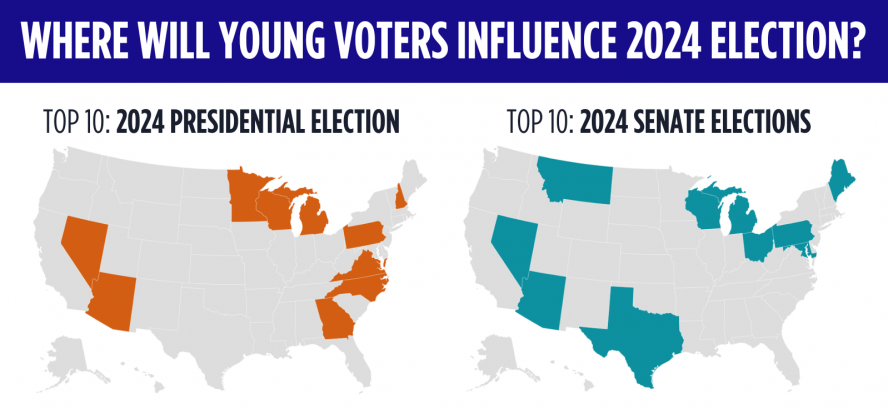Youth Electoral Significance Index (YESI)
Many institutions and communities can help increase youth voting and participation in democracy. Different stakeholders will approach these efforts with different goals: some may want to address inequities in civic participation for a more representative electorate, some build a broad base of political power, and others simply to win the next election.
CIRCLE’s Youth Electoral Significance Index (YESI) is a valuable tool for any individual, campaign, organization, or institution that is working toward one or more of those goals. The index provides data-driven rankings of the top 10 states and congressional districts where young voters have the highest potential to influence results in the next election. The YESI can help stakeholders identify places where additional efforts and resources to turn out the youth vote could be decisive; it can also be a tool for broadening engagement if efforts focus on reaching youth who have not historically participated.
NEW 2024 rankings updated as of September 1.
Methodology: How Do We Rank the Races?
The Youth Electoral Significance Index (YESI) is calculated in four main steps:
-
Gather available demographic and socioeconomic data on each state or district, turnout and registration in past elections, and the predicted competitiveness of 2024 races. Explore the data components for both the state- and district-level rankings below.
-
Calculate indicators as necessary and create composite indices (i.e., scores made up of multiple, related indicators) as appropriate, then determine how to combine and weight the indicators into a formula for calculating the YESI.
-
Compute the YESI as a function of standardized scores from each component of YESI data. This creates an unweighted index, that does not yet incorporate the competitiveness of the upcoming race.
-
Compute a weighted YESI by adding a competitiveness score to the unweighted YESI. This step creates a ranking of states that are all considered to have at least moderately competitive races in which youth could influence results.
About the House Rankings and Data
Because not all data is available to (or applies) at the congressional district level, the House YESI rankings use a slightly different set of indicators. For example, it includes the state-level Facilitative Election Law Score, and it only uses recent youth voter turnout data for the 2022 midterm election—the first to use the current congressional map. Data on nonprofits in lieu of the statewide Youth Investment Index which includes data on state education spending and juvenile detention. It does not include data on youth vote choice. The district-specific data gathered and used is detailed in the table below.
Notes: To provide broader context about youth engagement in each ranked race, state-level data on facilitative elections, youth investment, and youth vote differential is displayed in the House YESI visualization alongside district-specific data. Additionally, the updated 2024 rankings exclude New York House races given recent redistricting in the state and the lack of all available data for the new districts.
Previous Election Cycles
CIRCLE previously produced the Youth Electoral Significance Index for the 2018, 2020, and 2022 elections. You can explore those rankings below.


